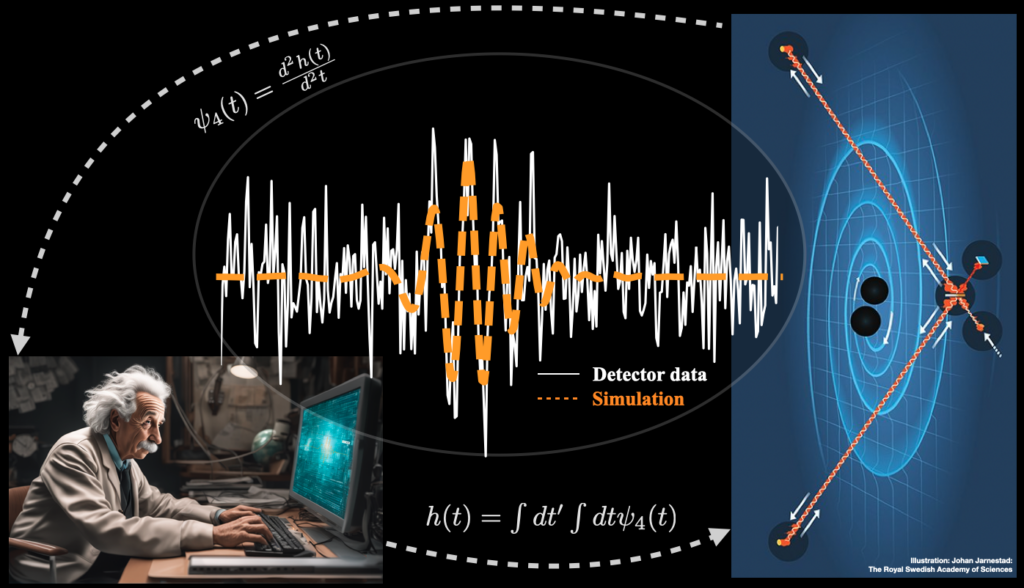At least one of the gravitational waves detected by the LIGO and Virgo detectors might not be from black holes or neutron stars, but something even more exotic, physicists have claimed. Known as boson stars or dark matter stars, we have no other evidence these objects even exist. However, they would be useful in explaining some aspects of the universe that don’t currently make sense, as well as the exceptional features of this wave.
Gravitational wave detectors were established to capture mergers between objects we already knew existed, such as black holes and neutron stars. Despite uncertainty as to whether we have detected a merger between one of each, signs of two black holes colliding have only been overshadowed for recent scientific importance by neutron star mergers.
However, an additional hope for the detectors was that they would find new objects, whose existence was uncertain or barely guessed at. An international team thinks one detected gravitational wave, GW190521, might have done just that. Their bet is on a merger between two stars made from particles different from those that make up most of the familiar universe.
Bosons are a class of subatomic particles with integer spins. Besides photons, which we know well, and the Higgs boson, where at least the name is familiar, the category includes a class of particles little known to non-physicists. While photons lack mass, and Higgs bosons have exceptionally short lives, it has been proposed that undiscovered bosons could form stars where they are clumped in pockets left over from the Big Bang.
“Boson stars behave very much like black holes but they are fundamentally different, as they lack the two most distinctive (and somewhat problematic) aspects of black holes: their no-return surface known as event horizon, and the singularity in the interior, where laws of physics break down,” said study author Dr Sanchis-Gual of the University of Valencia in a statement.
If so, we might not be able to see such stars – but their mass could contribute to the explanation for the frustratingly elusive dark matter. On their own, such boson stars would be almost impossible to find, but if two are in close orbits around each other they would produce a lasting gravitational wave at the edge of our capacity to detect. If the orbits decayed until the two stars collide, the result would be a gravitational wave superficially similar to those we have seen.
The challenge would be distinguishing such a wave from one produced by two black holes. But one wave is thought to show the signs.

A comparison of the gravitational wave GW190521 as detected by the LIGO network and a simulation of two boson stars, along with a diagram of the stars’ orbits degrading
Image Credit: Galician Institute of High Energy Physics
When GW190521 was first detected it was announced as the product of the two heaviest (and most distant) black holes we had yet seen merging, with a combined mass of 142 times that of the Sun.
However, details of the event puzzled astronomers. For one thing, the location appeared to be in the disk around a supermassive black hole, which was unexpected. Moreover, the larger object before the merger had a mass of 85 times that of the Sun, a size thought to be impossible for a single star to produce. Although a previous merger of less massive black holes offered a possible explanation, the event remains an oddity.
In two papers, Sanchis-Gaul and co-authors propose GW190521’s components are more likely to have been boson stars than black holes. They argue that the methods currently used to process gravitational waves are designed on the assumption that anything contributing to a wave, and larger than a certain mass, is a black hole. By scrapping these assumptions and simulating what would happen if boson stars merged, the team produced an outcome similar to GW190521. They also provide evidence another gravitational wave, GW190426, was not produced by boson stars, while GW200220 probably wasn’t either.
The fact a simulation matches the observation doesn’t prove GW190521 was a boson star merger, or even that boson stars exist. Alternative explanations for GW190521 have been offered, but these also require changes to the way we picture the universe. Debates about the nature of this event will continue for some time, but with luck, future gravitational wave detections will be made that require novel explanations, helping us determine which is right.
A paper on how the authors searched for signs of boson stars in specific gravitational waves is published in the journal Physical Review D.
A more general discussion on how to process gravitational wave data to allow for more possibilities is published open access in the journal Physical Review X.
Source Link: Merging Dark Matter Stars Could Have Produced An Unusual Gravitational Wave